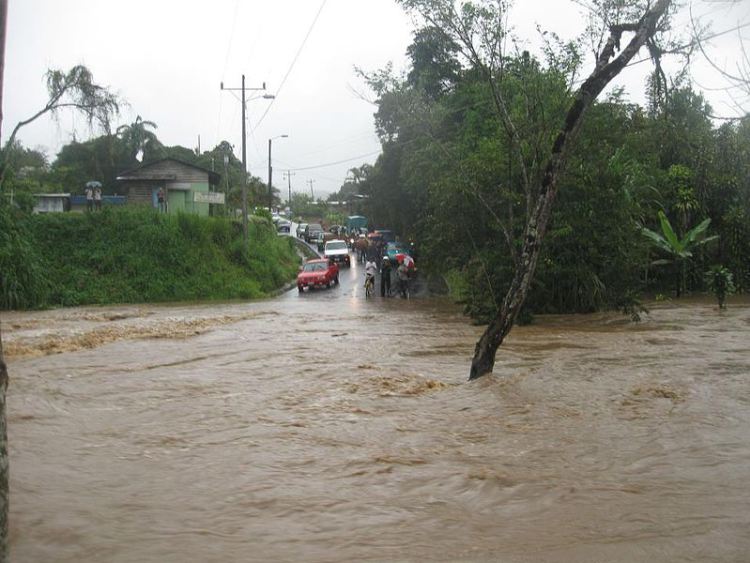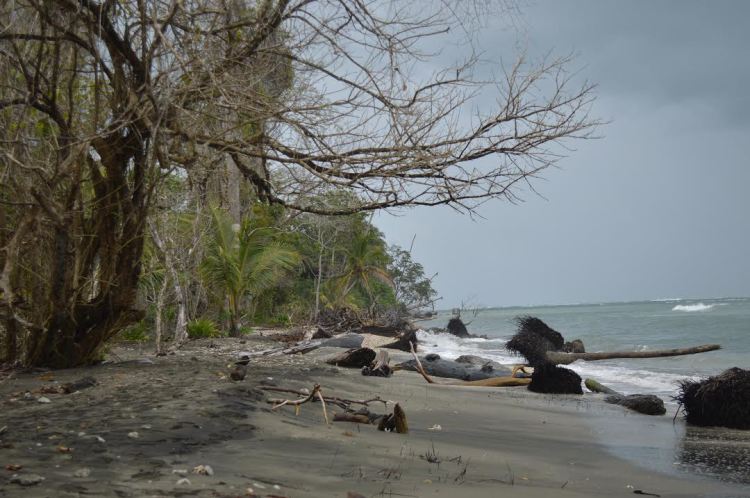In this piece, #ClimateTracker Diego Arguedas Ortiz reflects on the worsening water crisis overcoming Central America
Last July I visited Costa Rica’s Pacific coast and, making my way through the flat miles of the Nicoya peninsula, I was shocked at the sight: yellow grasses, hungry-looking cattle and arid trees without the classic evergreen foliage. The country was showing the symptoms of what I had heard many times back in the city: the drought.
Speaking on water related issues, Central America is a bizarre region. It can experience fatal floods, like those on 2011 when 105 people died across the isthmus, thousands had to be resettled and millions of dollars worth of crops and infrastructure were lost; as we can also have a suffocating and dry heat. As we do now.
The year 2014 has been a tough one for the region. The effect of El Niño, magnified by climate change in one of the world’s most vulnerable zones, gave us a sneak peek on what the future holds for us if we don’t (if the world doesn’t) deviate from current emission levels: less rain, less life, less crops to harvest and a poorer economy.
“In the less pessimist scenario (B2), precipitation would diminish by 3% in Panama, 7% in Guatemala, between 10 and 13% in Costa Rica, Belice, El Salvador, and Honduras, and 17% in Nicaragua, with a regional average of 11%”, says the United Nations Economic Commission for Latin America in their report “La economía del cambio climático en Centroamérica” (The economics of climate change in Central America), published on 2012.
This would endanger corn, rice and beans plantations, source of both income and nutrition to many rural families.
We already know climate change will and is affecting us. That’s a fact you can’t argue with. It’s a matter of learning how to live with it, to adapt to its consequences. The solution won’t come by declaring state of emergency in one or two departments, or creating an extra budget for a farming program, but in a wider concept about how each country envisions its development.
Problem is, the fight against climate change has been the ugly duckling of public policy in the region for decades, with countries more eager to land their hands on international aid than on budgeting their own money. It’s not that foreign money is bad, but a nation must show its own commitment. Global aid has actually been the engine driving this fight in the region: in 2012 alone, Costa Rica received $10 million for adaptation, and that’s great; but the effort needs to be bigger that accountancy. Without solid policymaking, this cart is going nowhere.
For the region to work as a unit on climate change (and not a politically isolated strip of land) we must act as one. The Central American Integration System (en embrionary regional integration project) has some efforts, like the Regional Committee on Hydraulic Resources or the Central American Commission on Environment and Development, but more needs to be done. El Niño, for instance, will not ask to whom belongs the land at this or that side of the border, and neither should our answer to extreme meteorological events.
“It this context is more advisable to achieve national, regional, and international agreements and to bolster inclusive and sustainable adaptation strategies that connect poverty and vulnerability reduction actions with adaption to climate change and the transition to a low-carbon economy”, recommend the UN Commission in its report.
Costa Rica, El Salvador and Panamá had elections and newly elected governments this year, which is a chance to refresh regional policies. This is the time to think on a national and regional plan to adapt to climate change.
The vulnerable region.
The Central American region suffers the effects of climate change, but is barely responsible of global warming, as it often happens. Less than 0.8% of the world’s emissions come from this strip of land connecting North and South America, yet we pay the price.
But, are we so vulnerable? Yes, we are. According to Germanwatch’s Global Climate Risk Index, three Central American countries stand among the 10 countries most affected by extreme climate change related events between 1993 and 2012 (1° Honduras, 4° Nicaragua and 10° Guatemala). The rest follows soon after with El Salvador (13°), Belize (22°) and Costa Rica (66°).
In this horrible situation not only crops and people are hurt, but also the environment. According to the most optimistic scenarios, if emission levels keep their rhythm, the region would lose about 35% of it Potential Biodiversity Index, damaging nature and local tourism. Bye bye rainforest trekking.
And lets not forget how devastating climate change is for vulnerable communities living within shaky house and with a limited access to food, employment or clean water. To them, a hurricane or a drought might be a life-ending experience.
It’s the time to act for the region’s governments, whose duty is creating an integrated policy for climate change while we still have a chance. If they not, our children will look back fifty years from now and say: on those men we lost our last hope.
This piece was originally posted here in Spanish
Format: Aside

